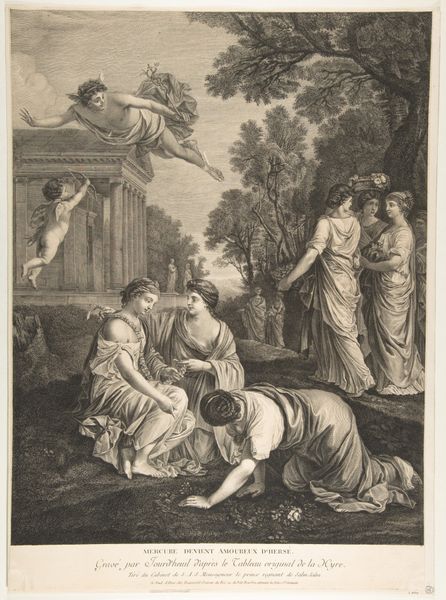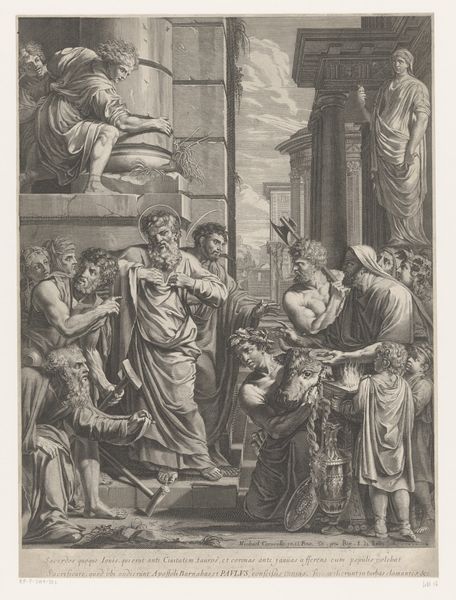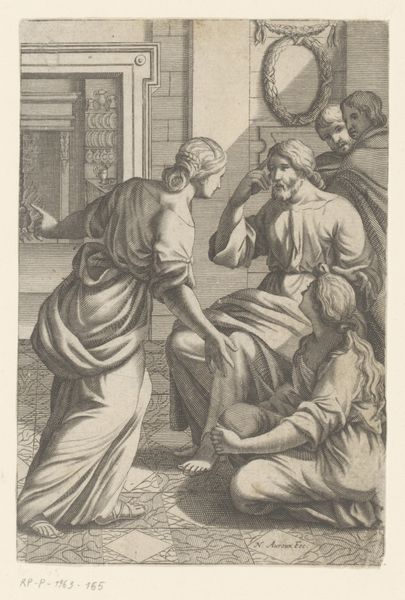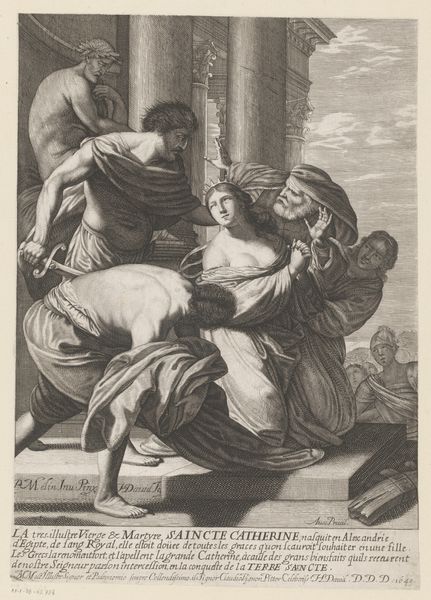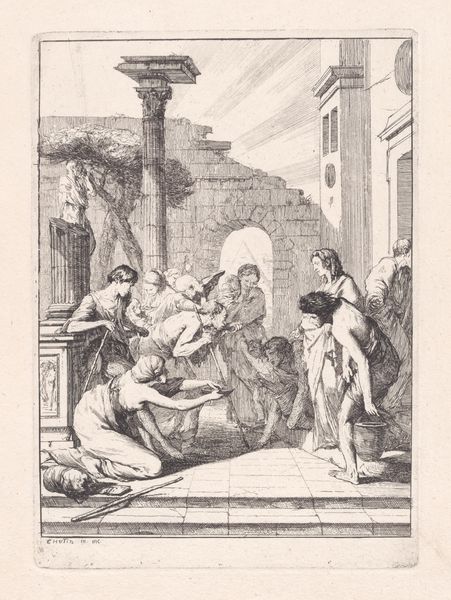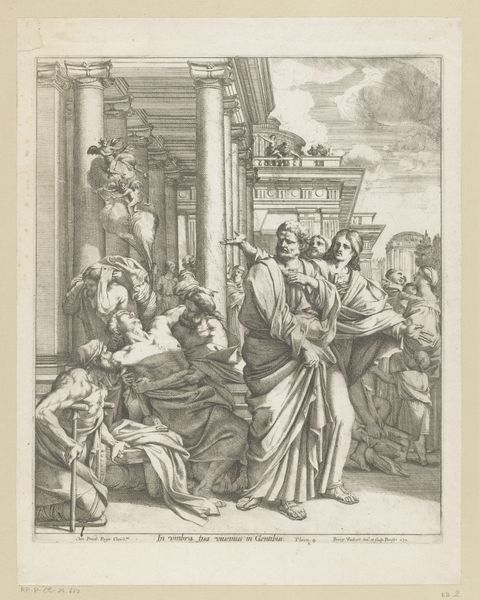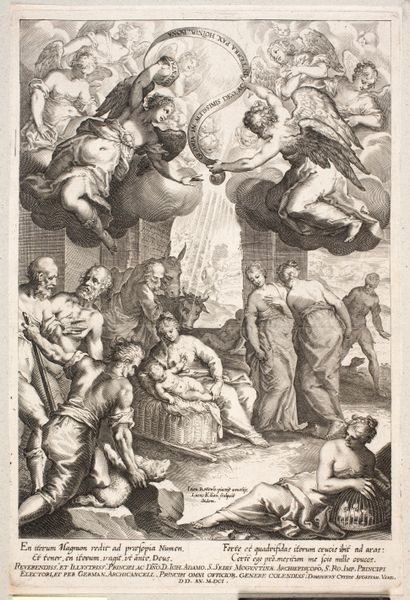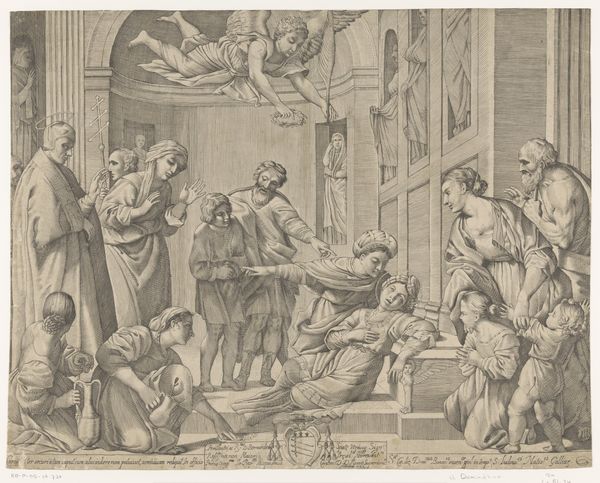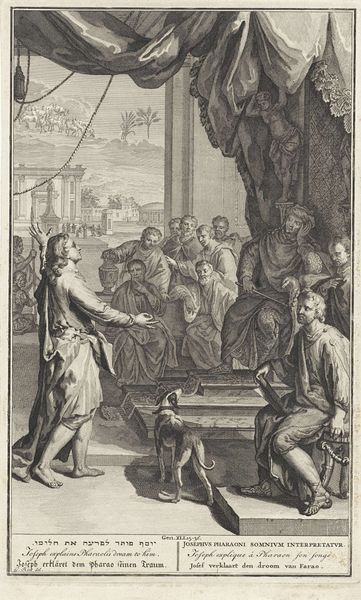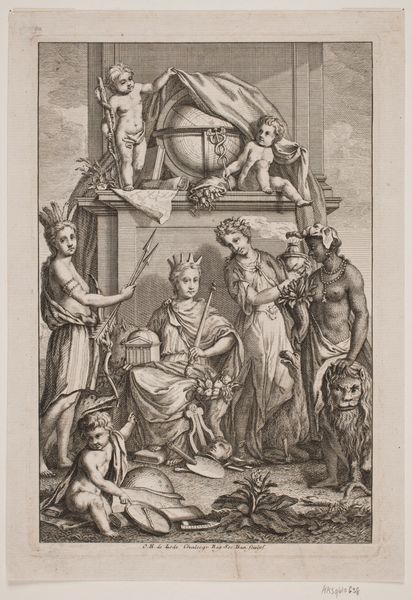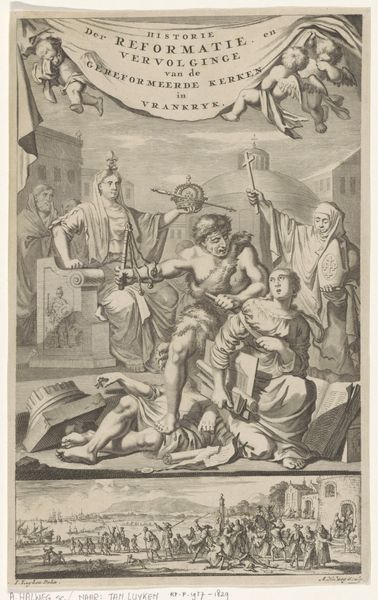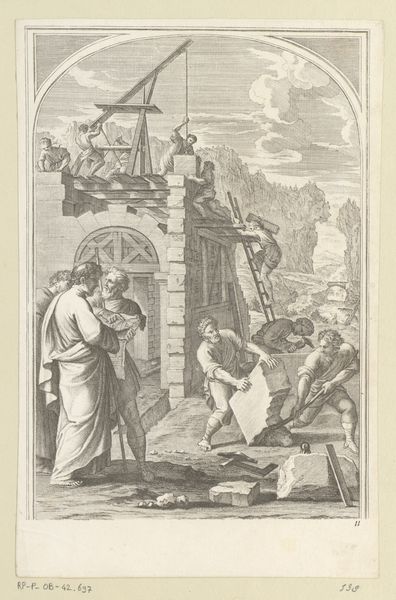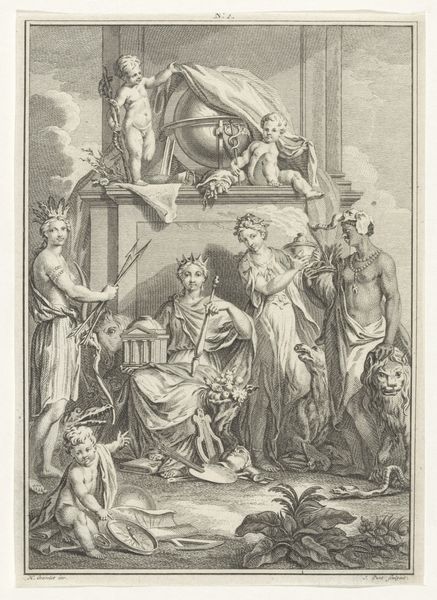
Allegorical composition celebrating the Humanities 1695
0:00
0:00
drawing, print, engraving
#
drawing
#
allegory
#
baroque
# print
#
perspective
#
figuration
#
line
#
history-painting
#
academic-art
#
engraving
#
miniature
Dimensions: sheet: 10 9/16 x 6 5/8 in. (26.8 x 16.8 cm) plate: 9 5/8 x 5 7/8 in. (24.5 x 15 cm)
Copyright: Public Domain
Editor: Here we have Sir Nicolas Dorigny’s engraving, "Allegorical composition celebrating the Humanities," from 1695. It’s currently held at the Met. The details in this print are amazing. There’s so much going on. What do you see in this piece, what story do you think it’s trying to tell? Curator: This print provides an interesting commentary on the prevailing academic values of the late 17th century. It’s not just about glorifying the Humanities, but also about understanding the historical and social context in which these fields of study were elevated. Dorigny seems to be highlighting a very specific worldview, filtered through a distinctly Eurocentric lens. Look at the figures – how are they presented, what societal roles do they seem to embody? Editor: I see. So, it’s not enough to just admire the artistry. We also have to consider whose humanities are being celebrated and whose are being excluded. Curator: Exactly. And who gets to define these "humanities?" Notice how the piece utilizes allegory. Consider the way historical figures, philosophies, and perhaps even political ideologies of the time might be subtly embedded within the imagery. How might a contemporary understanding of feminism, post-colonialism or critical race theory change the interpretation of the work? Editor: I never really considered it from a perspective rooted in critical theory. That's helpful. Curator: Considering artworks through the lens of power dynamics is crucial. What did you think about the scale and composition of the art? Editor: Well, looking at it again, the women are the focus but their roles seem prescribed somehow. The reclining male figure appears marginalized. It's almost as though, knowledge has become a spectacle here, wouldn't you say? I am starting to question whose knowledge and values are amplified here. Curator: Absolutely! By asking these critical questions, you are not simply looking at the art. Rather, you’re beginning to engage with its potential for social and historical commentary. This work encourages conversations about intersectional issues like identity, knowledge dissemination, and the perpetuation of particular power structures. Editor: That gives me a lot to think about. Thank you for sharing such a thought-provoking view. Curator: It’s been my pleasure. Let's continue our discussion and see what else we can unravel about this work!
Comments
No comments
Be the first to comment and join the conversation on the ultimate creative platform.
